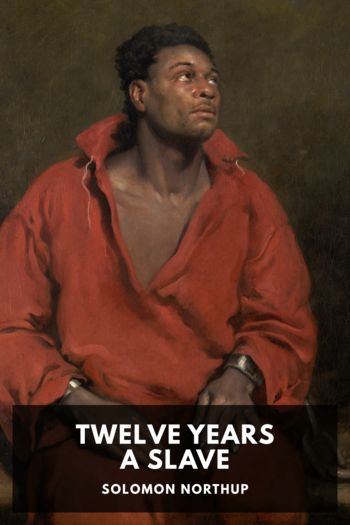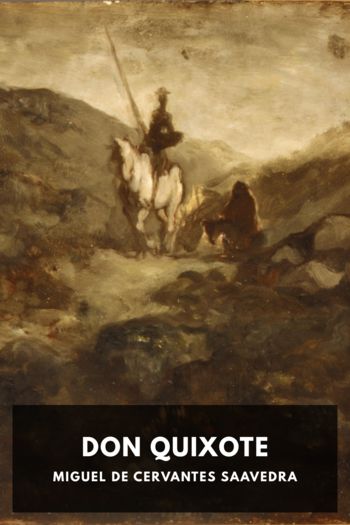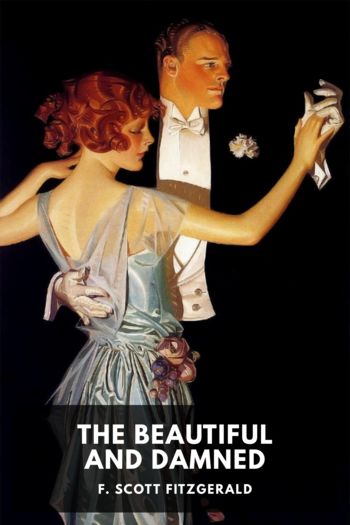Twelve Years a Slave by Solomon Northup (books to read to get smarter .txt) 📕

- Author: Solomon Northup
Book online «Twelve Years a Slave by Solomon Northup (books to read to get smarter .txt) 📕». Author Solomon Northup
There are larger mills, and those constructed differently from the one thus imperfectly described, but none, perhaps, more celebrated than this anywhere on Bayou Boeuf. Lambert, of New Orleans, is a partner of Hawkins. He is a man of vast wealth, holding, as I have been told, an interest in over forty different sugar plantations in Louisiana.
The only respite from constant labor the slave has through the whole year, is during the Christmas holidays. Epps allowed us three—others allow four, five and six days, according to the measure of their generosity. It is the only time to which they look forward with any interest or pleasure. They are glad when night comes, not only because it brings them a few hours repose, but because it brings them one day nearer Christmas. It is hailed with equal delight by the old and the young; even Uncle Abram ceases to glorify Andrew Jackson, and Patsey forgets her many sorrows, amid the general hilarity of the holidays. It is the time of feasting, and frolicking, and fiddling—the carnival season with the children of bondage. They are the only days when they are allowed a little restricted liberty, and heartily indeed do they enjoy it.
It is the custom for one planter to give a “Christmas supper,” inviting the slaves from neighboring plantations to join his own on the occasion; for instance, one year it is given by Epps, the next by Marshall, the next by Hawkins, and so on. Usually from three to five hundred are assembled, coming together on foot, in carts, on horseback, on mules, riding double and triple, sometimes a boy and girl, at others a girl and two boys, and at others again a boy, a girl and an old woman. Uncle Abram astride a mule, with Aunt Phebe and Patsey behind him, trotting towards a Christmas supper, would be no uncommon sight on Bayou Boeuf.
Then, too, “of all days i’ the year,” they array themselves in their best attire. The cotton coat has been washed clean, the stump of a tallow candle has been applied to the shoes, and if so fortunate as to possess a rimless or a crownless hat, it is placed jauntily on the head. They are welcomed with equal cordiality, however, if they come bareheaded and barefooted to the feast. As a general thing, the women wear handkerchiefs tied about their heads, but if chance has thrown in their way a fiery red ribbon, or a cast-off bonnet of their mistress’ grandmother, it is sure to be worn on such occasions. Red—the deep blood red—is decidedly the favorite color among the enslaved damsels of my acquaintance. If a red ribbon does not encircle the neck, you will be certain to find all the hair of their woolly heads tied up with red strings of one sort or another.
The table is spread in the open air, and loaded with varieties of meat and piles of vegetables. Bacon and corn meal at such times are dispensed with. Sometimes the cooking is performed in the kitchen on the plantation, at others in the shade of wide branching trees. In the latter case, a ditch is dug in the ground, and wood laid in and burned until it is filled with glowing coals, over which chickens, ducks, turkeys, pigs, and not unfrequently the entire body of a wild ox, are roasted. They are furnished also with flour, of which biscuits are made, and often with peach and other preserves, with tarts, and every manner and description of pies, except the mince, that being an article of pastry as yet unknown among them. Only the slave who has lived all the years on his scanty allowance of meal and bacon, can appreciate such suppers. White people in great numbers assemble to witness the gastronomical enjoyments.
They seat themselves at the rustic table—the males on one side, the females on the other. The two between whom there may have been an exchange of tenderness, invariably manage





Comments (0)